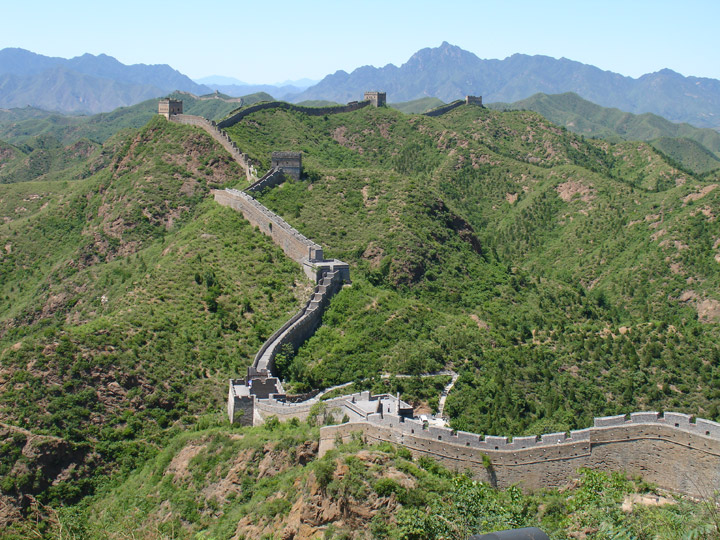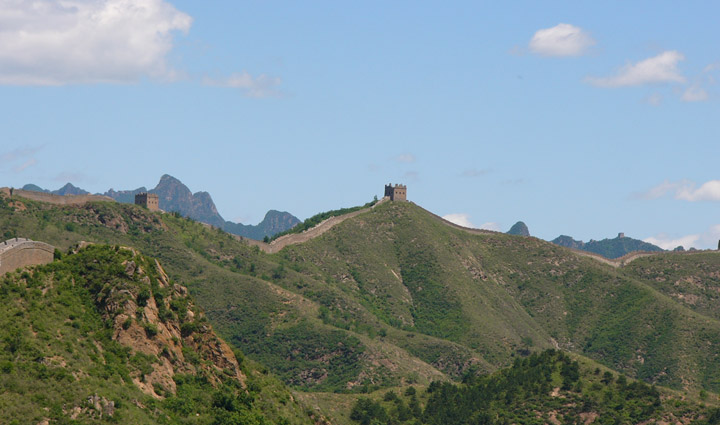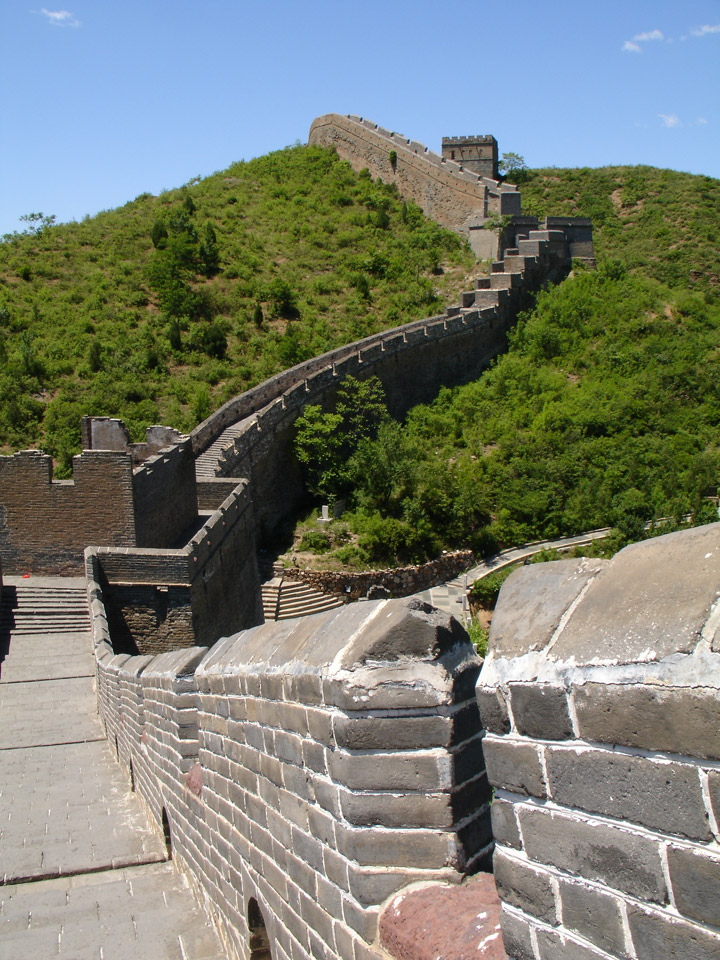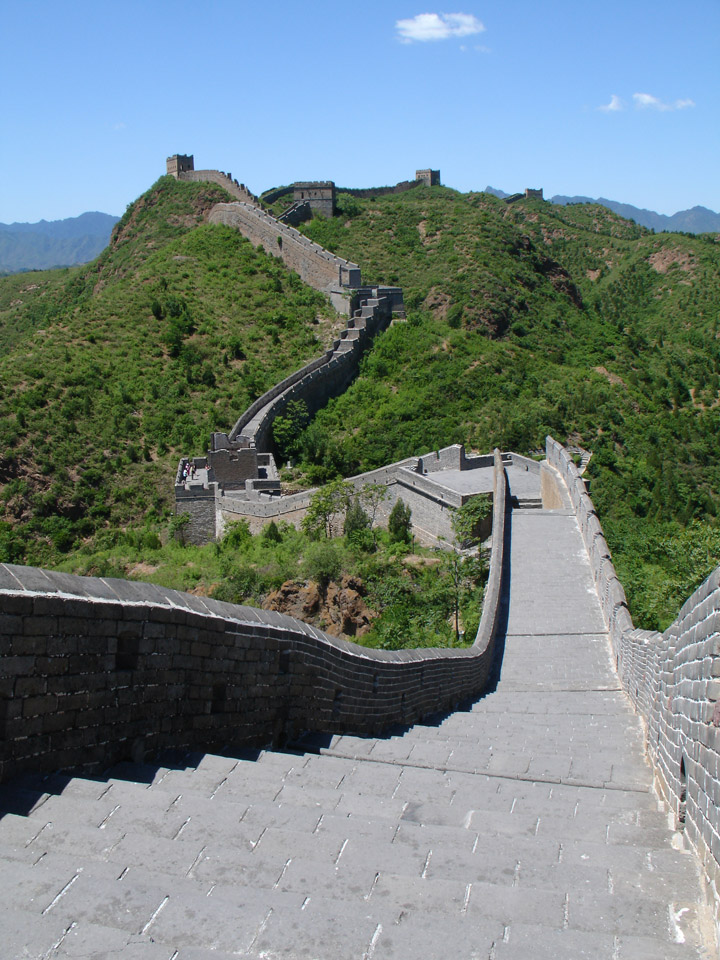

Great Wall 2005
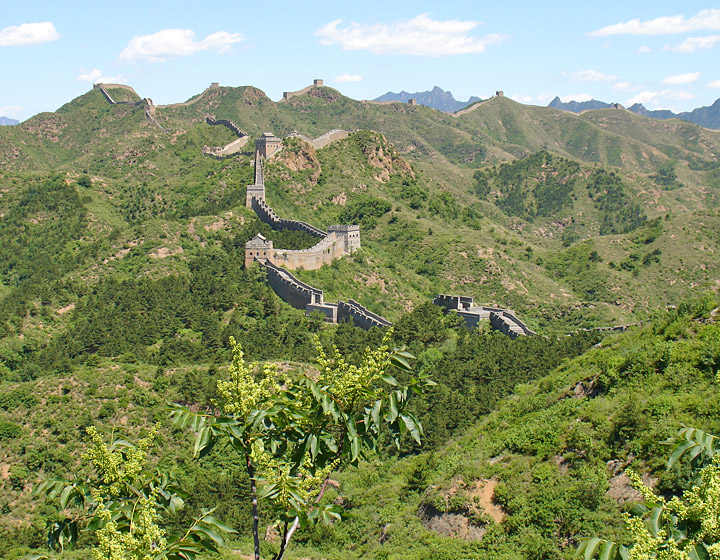
the Great Wall at Jinshanling
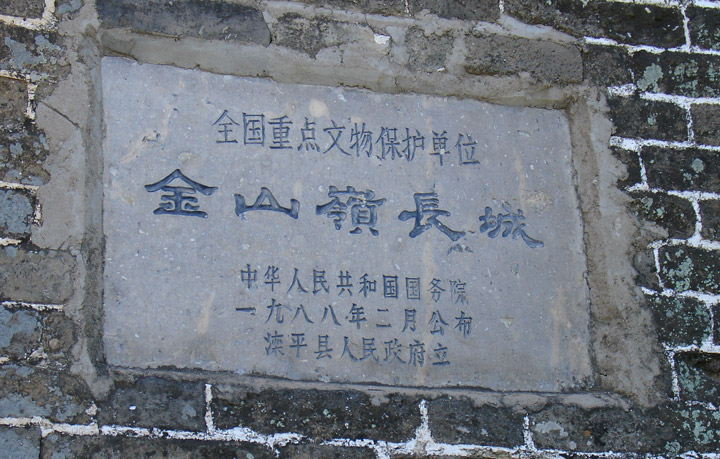
Chinese inscription of Jinshanling Great Wall
140 kilometers at the north-east end of Beijing City, there is a section of the Great Wall, called Jinshanling Great Wall. It is 90 kilometers to the Mountain Resort of Chengde. A tablet with the Chinese inscription of "Jinshanling Great Wall" was set in this section.
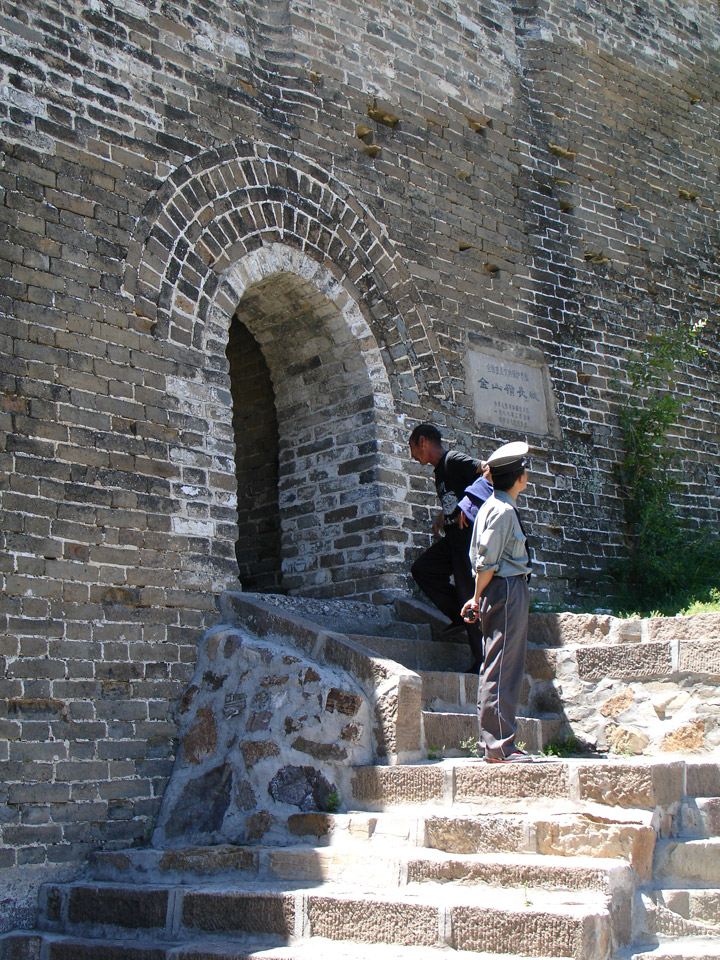
entrance
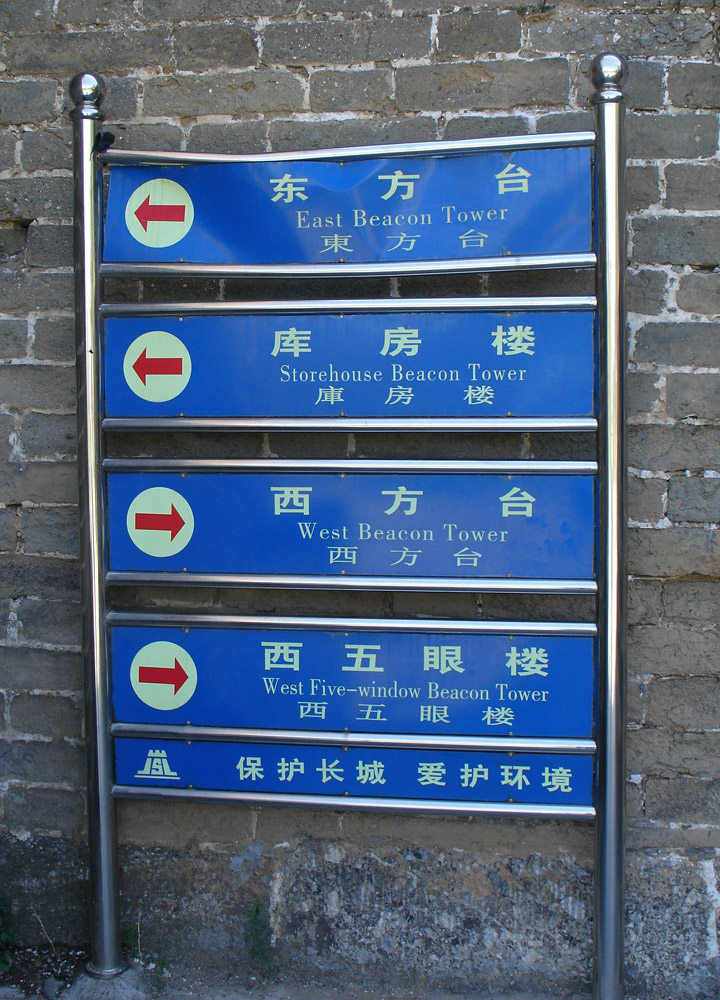
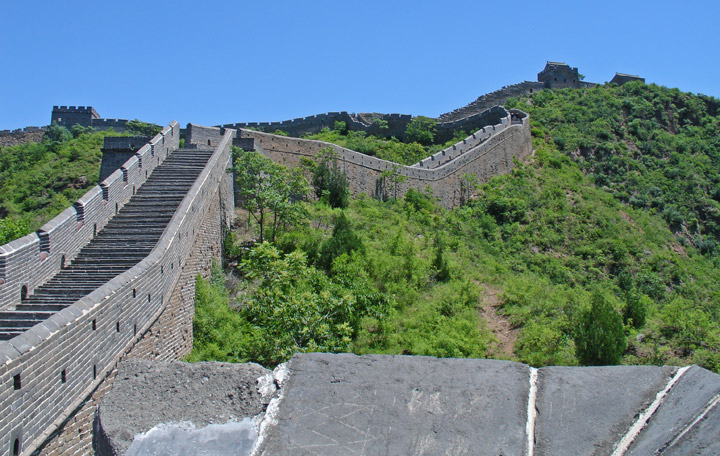
full view of the Jinshanling Great Wall
Its east end connects to the Simatai Great Wall. Jinshangling Great Wall got its name because it was built on the bigger and the smaller Jinshan Mountains.
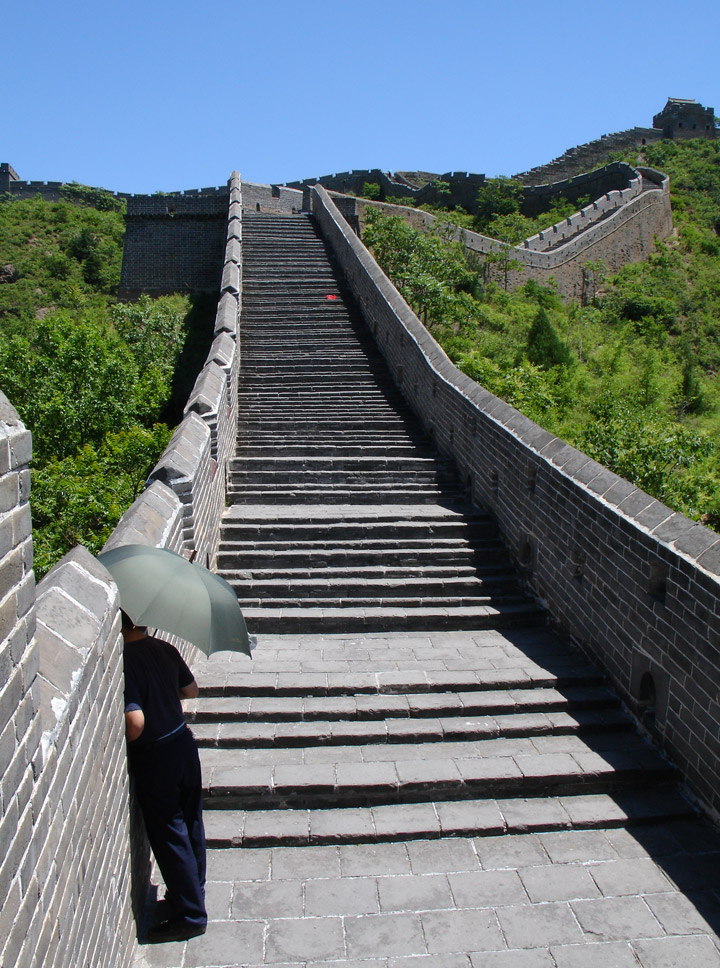
The Jinshanling Great Wall was initially built from 1368 to 1389 in the Ming
Dynasty, and in 1567 or 1570 rebuilding of the Wall was mainly directed by
General Qi Jiguang. Poems and tablet writings can be found on the Jinshanling
Great Wall left from the time Qi Jiguang directed building of this section of
the Great Wall.
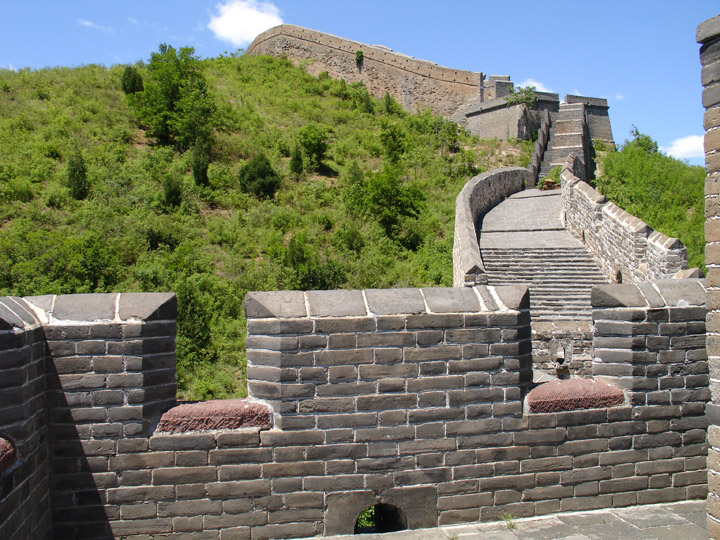
The total length of this section is about eleven kilometers (6.8 miles), and the
scenic spot of the Jinshanling Great Wall has an area of 32 square kilometers.
The Wall is about seven to eight meters high and five to six meters wide, which
is made of brick and stone. The Jinshanling Great Wall has an elevation of 700
meters. Watching Beijing Tower is on the highest position, from which you can
see Beijing. The Jinshanling Great Wall is second only to the Badaling Great
Wall in its completeness.
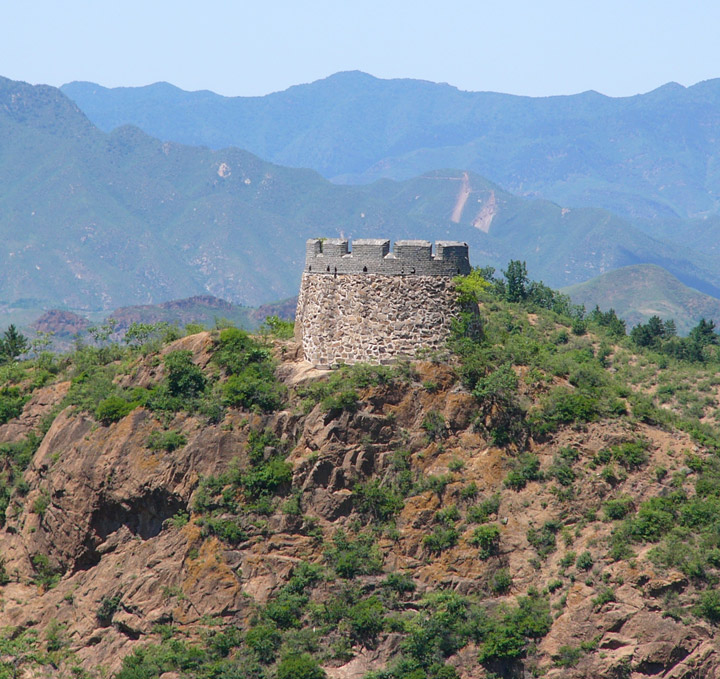
One enemy tower
There are more than 100 enemy towers along the whole Jinshanling Great Wall. Built stably and elegantly, different towers have different structures and appearances. Rows of 3-meter-high Barrier Walls were built leading to the enemy towers to protect the towers. Some of the towers are storerooms as well. They were used to store food, hay and weapons.

Two of so many enemy towers are bigger Jinshan and smaller Jinshan. There is a
legend about them. It was said that the two towers were built by 3000 soldiers
from the Jiangsu and Zhejiang Provinces led northward by Qi Jiguang. In order to
remind themselves of their hometowns, the names of bigger and smaller Jinshan
Islands in Zhenjiang City, which is in Jiangsu Province, were used to name the
two enemy towers.
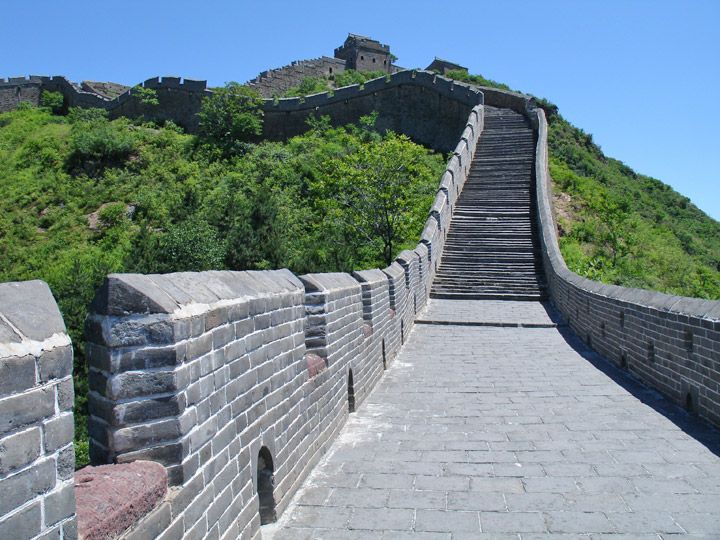
As there are relatively few tourists at Jinshanling Great Wall, it is a good
place to explore on foot.
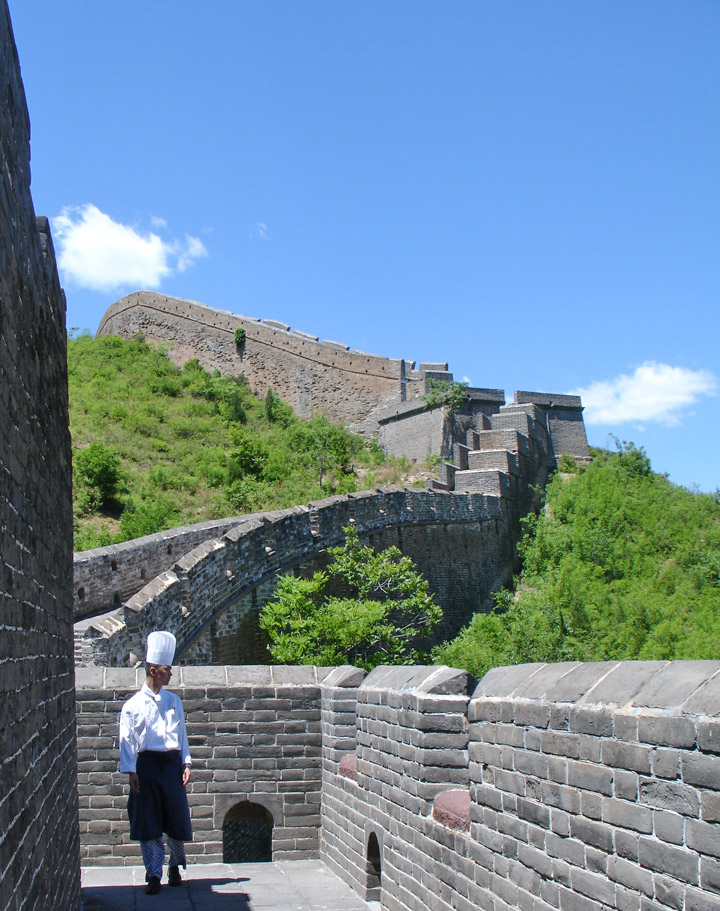
the Chef
means we will have lunch on the wall
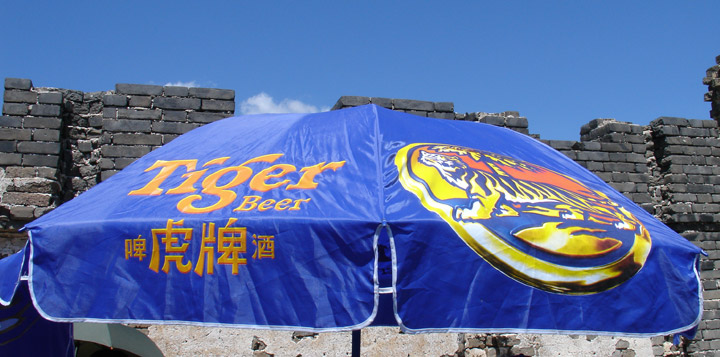
with Tiger Beer
In early mornings of spring and summer you can see a remarkable view - "Cloud
Sea" below you from the Wall.
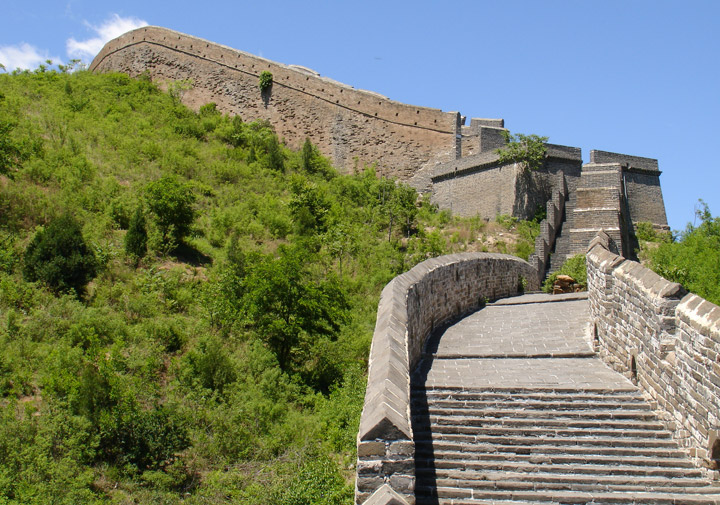
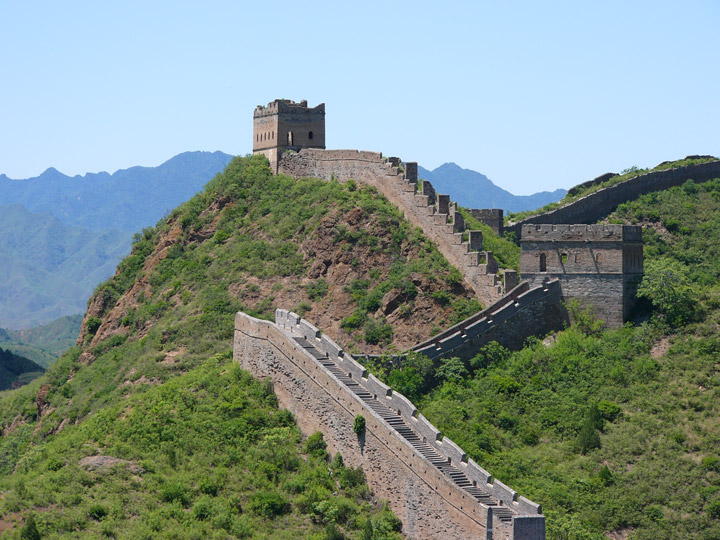
The Great Wall of China, one of the greatest wonders of the world, was enlisted in the World Heritage by UNESCO in 1987. Just like a gigantic dragon, the Great Wall winds up and down across deserts, grasslands, mountains and plateaus stretching approximately 6,700 kilometers (4,163 miles ) from east to west of China. With a history of more than 2000 years, some of the section of the great wall are now in ruins or even entirely disappeared. However, it is still one of the most appealing attractions all around the world owing to its architectural grandeur and historical significance.
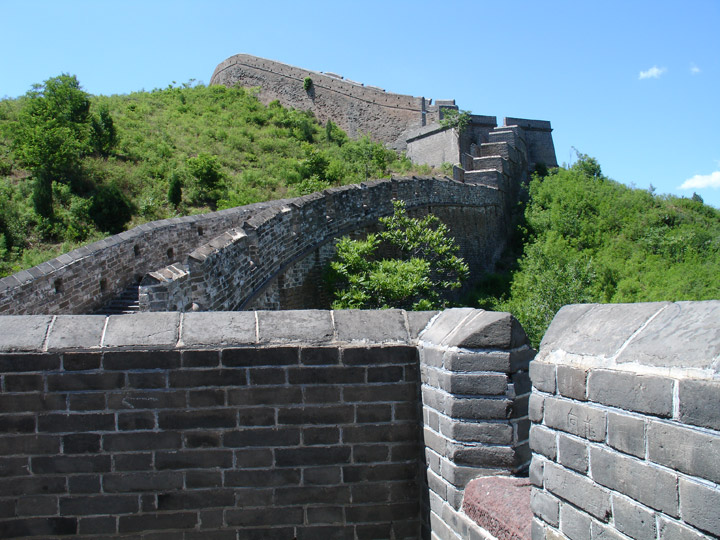

The Great Wall was originally built in the Spring, Autumn, and Warring States Periods as a defensive fortification by the three states: Yan, Zhao and Qin. The Great Wall went through constant extensions and repairs in later dynasties. In fact, it began as independent walls for different states when it was first built, and did not become the "Great" wall until the Qin Dynasty. Emperor Qin Shihuang succeeded in his effort to have the walls joined together to fend off the invasions from the Huns in the north after the unification of China. Since then, the Great Wall has served as a monument of the Chinese nation throughout history
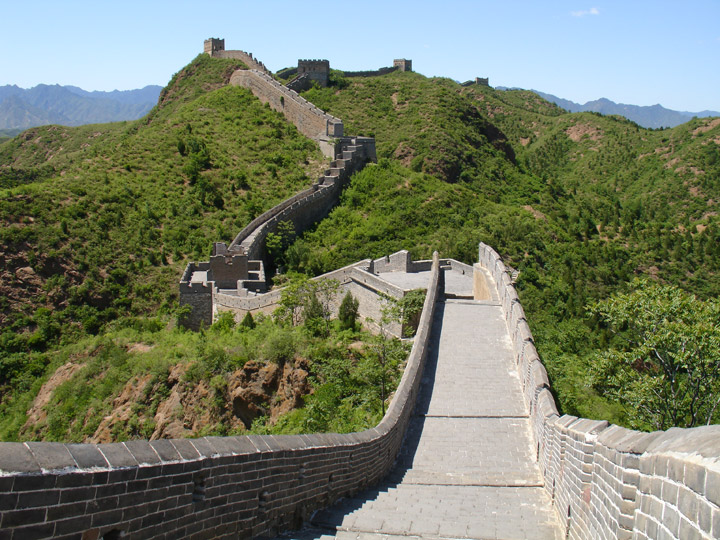
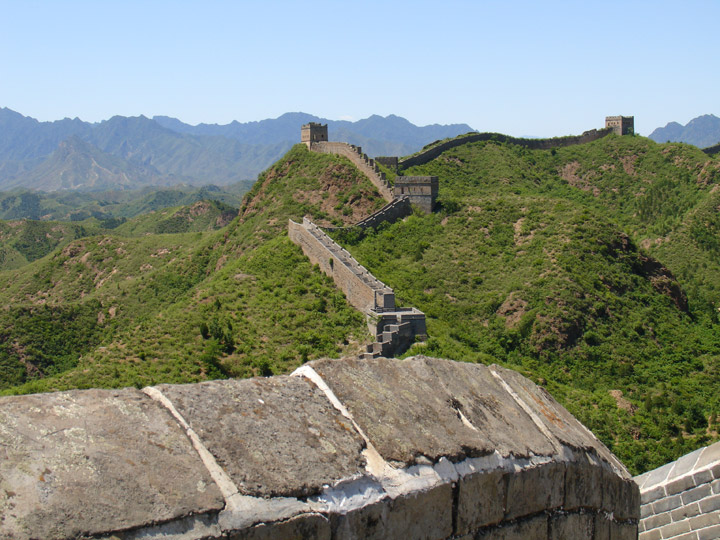
The construction of the Great Wall, drew heavily on the local resources for construction materials, was carried out in line with the local conditions under the management of contract and responsibility system. A great army of manpower, composed of soldiers, prisoners, and local people, built the wall. The construction result demonstrates the manifestation of the wisdom and tenacity of the Chinese people.
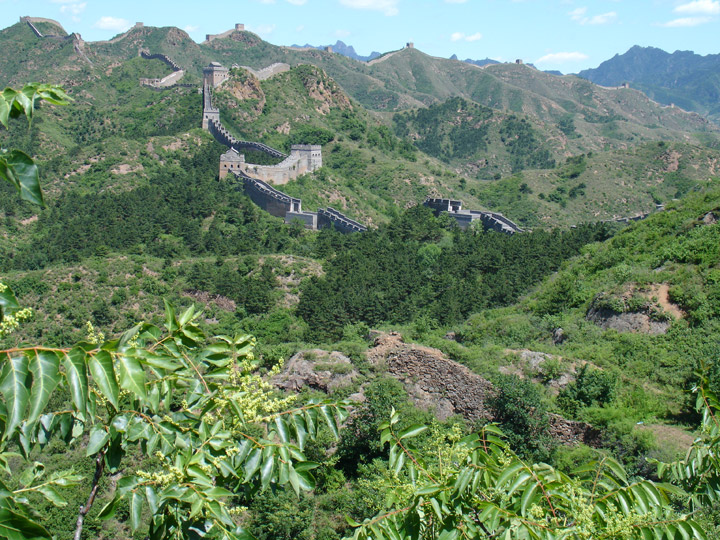
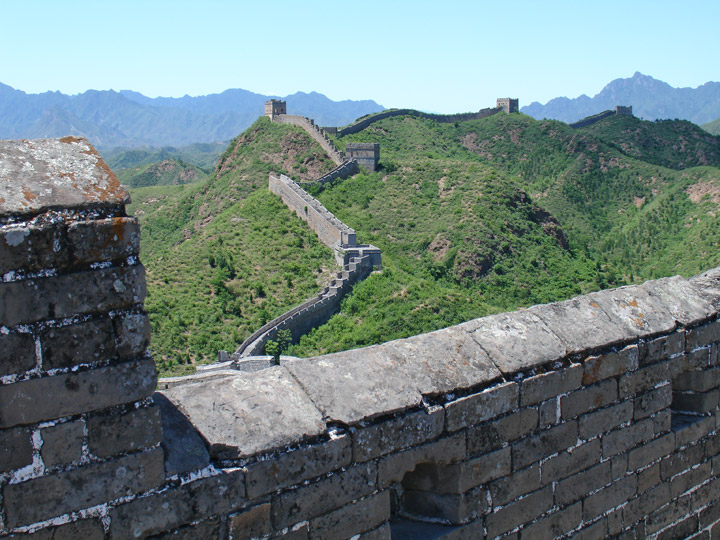
The Great Wall as we see today was mostly built during the Ming Dynasty. It starts from Shanhaiguan Pass in the east to Jiayuguan Pass in the west traversing provinces of Liaoning, Hebei, Beijing, Tianjin, Shanxi, Inner Mongolia, Ningxia, Shaanxi and Gansu.

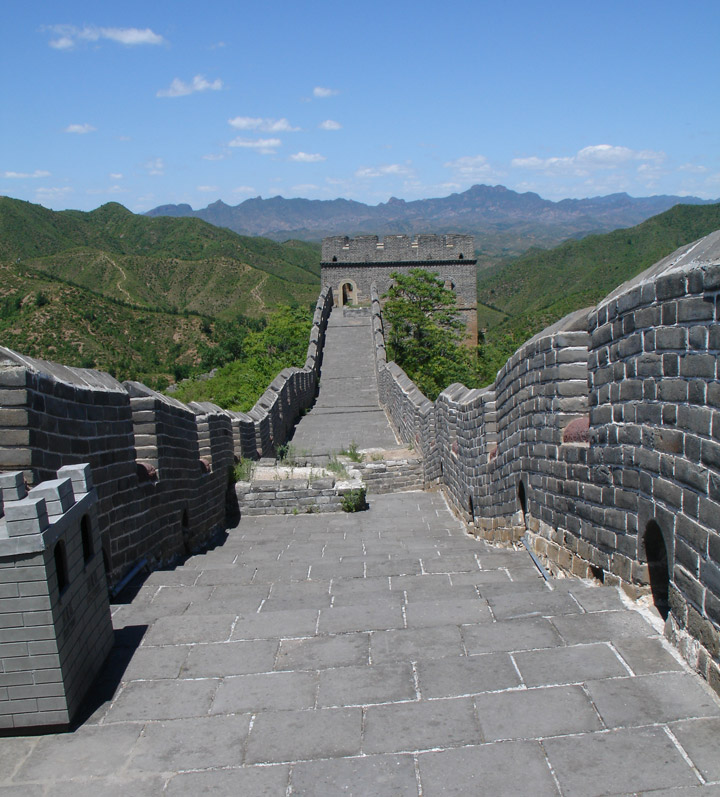
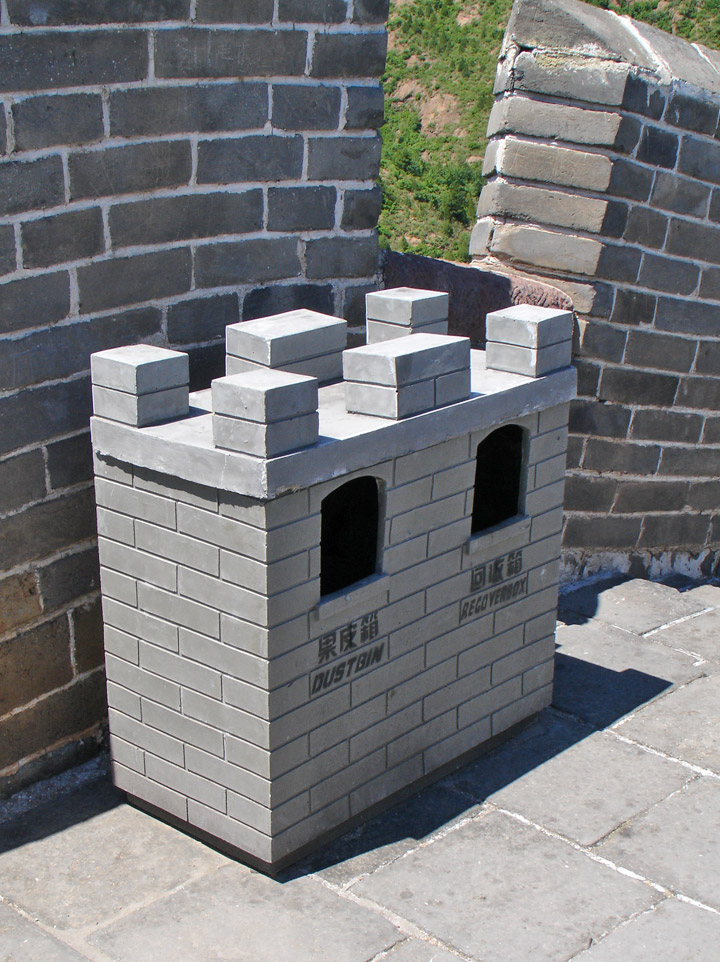
in-theme dust bin and recycle container
Following a forty-five day long survey of 101 sections of the Wall in different provinces, the China Great Wall Academy reported on December 12, 2002 that the forces of nature and destruction at the hand of mankind are bringing about the gradual reduction of its extent with the result that less than 30% remains in good condition. The Academy has called for greater protection of this important relic.
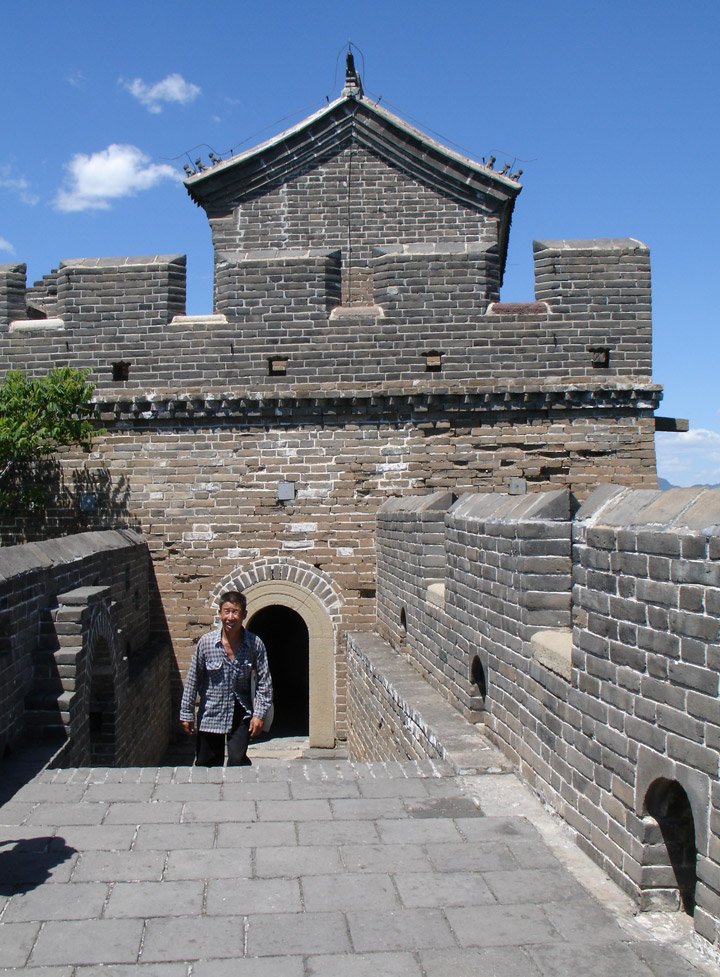
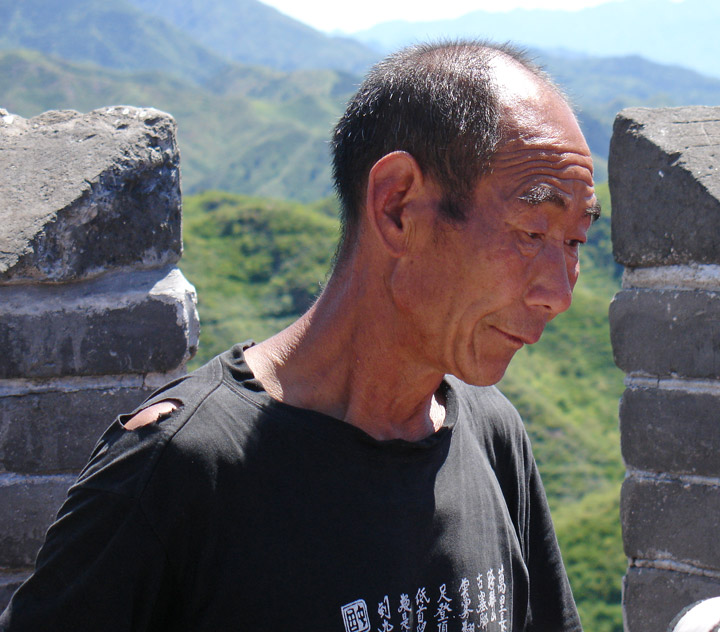
sells t-shirts
but needs a new one himself

selling photos
The Great Wall has long been incorporated into Chinese mythology and popular symbolism. The most beautiful of several legends is about the collapse of a section of the Great Wall caused by Meng Jiangnu, who cried bitterly over the death of her husband in the construction of the Great Wall. This legend has been spread widely through textbooks, folk songs and traditional operas. It is well-known in China.
